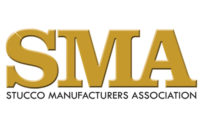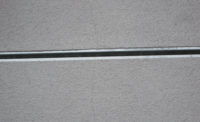Energy code requirements are pressing designers to install foam as a thermal break between framing and all exterior claddings. These requirements are primarily based on testing metal framing and claddings. The conductivity of metal is called short circuits and experts recommend continuous insulation on the outside of the framing. Exterior insulated finish systems are the obvious first choice. However, some designers are skeptical of EIFS and want cement stucco. But can it be done? Should it be done? Is it legal? All are good questions.
History
The practice of putting cement plaster or stucco over foam is not new. Cement plaster has been applied over foam for many years. This fact can be verified by the Portland Cement Association’s manual on cement stucco as they describe cement plaster adhering tenuously to foam substrates with historical use in large coolers and freezer rooms. Older plasterers noted that while the plaster functioned as intended, there was often the problem of excessive hairline cracking. Many regions of the United States and Canada have experimented with cement plaster over foam with mixed results. However, when certain principles and design guidelines are followed, they have proven to function well.
Code Approved
First, there are fully tested and approved systems on the market today, EIFS and one-coat stucco systems both have all the necessary approvals to be applied over foam. Some designers opt for generic cement stucco and want to know if they can do this, the answer is yes. ASTM has specific language about approved substrates for cement plaster. Rigid foam is one of these approved substrates.
Some consultants are concerned that hanging up to 12 pounds of cement on a screw cantilevered out from the framing is problematic. While this concern seems reasonable, cement sticks to most foam products and the system is not cantilevered when the building paper is placed behind the foam sheathing.
While brittle cement can be more susceptible to cracking over a softer sheathing, the cracking is typically only cosmetic, fine hairline cracks. Some contractors even report less cracking. The solution is a polymer enriched skim coat and mesh over a cured brown coat. This strong, yet flexible lamina adds water resistance and almost eliminates hairline cracking. It is recommended for designers and contractors to consider using an approved EIFS or insulated one-coat system.
It’s Not a Joke
The use of rigid foam under stucco is not new. The use of foam may be resistant or even repugnant to contractors, but everyone should start paying attention. The energy codes are not going away. Pressure is not just from the Department of Energy, the rest of the world wonders why we are so far behind. Some countries routinely add up to ten inches of foam to all exteriors. Of course they fail to realize that they use masonry walls and we tend to use more framing due to more stringent seismic requirements. Masonry can be done, but the reinforcing cost to be code compliant is rather prohibitive. This means we as an industry must adapt to more rigid foam under our claddings. The process will occur as cities begin to adopt the energy code and require continuous insulation be part of all buildings.
Fortunately, we are poised and ready. We have EIFS and insulated one-coat stucco ready to go. If you have resisted going to seminars or sales presentations by the manufacturers, get up and go. They are on the front edge trying to insure our industry does not fade away due to a trend or tipping point. Remember that in 1965, every plastering contractor thought drywall was a joke and only a fad. But who got the last laugh?






Report Abusive Comment